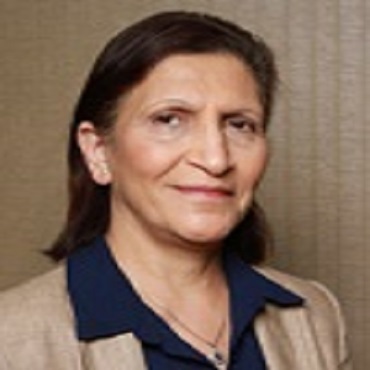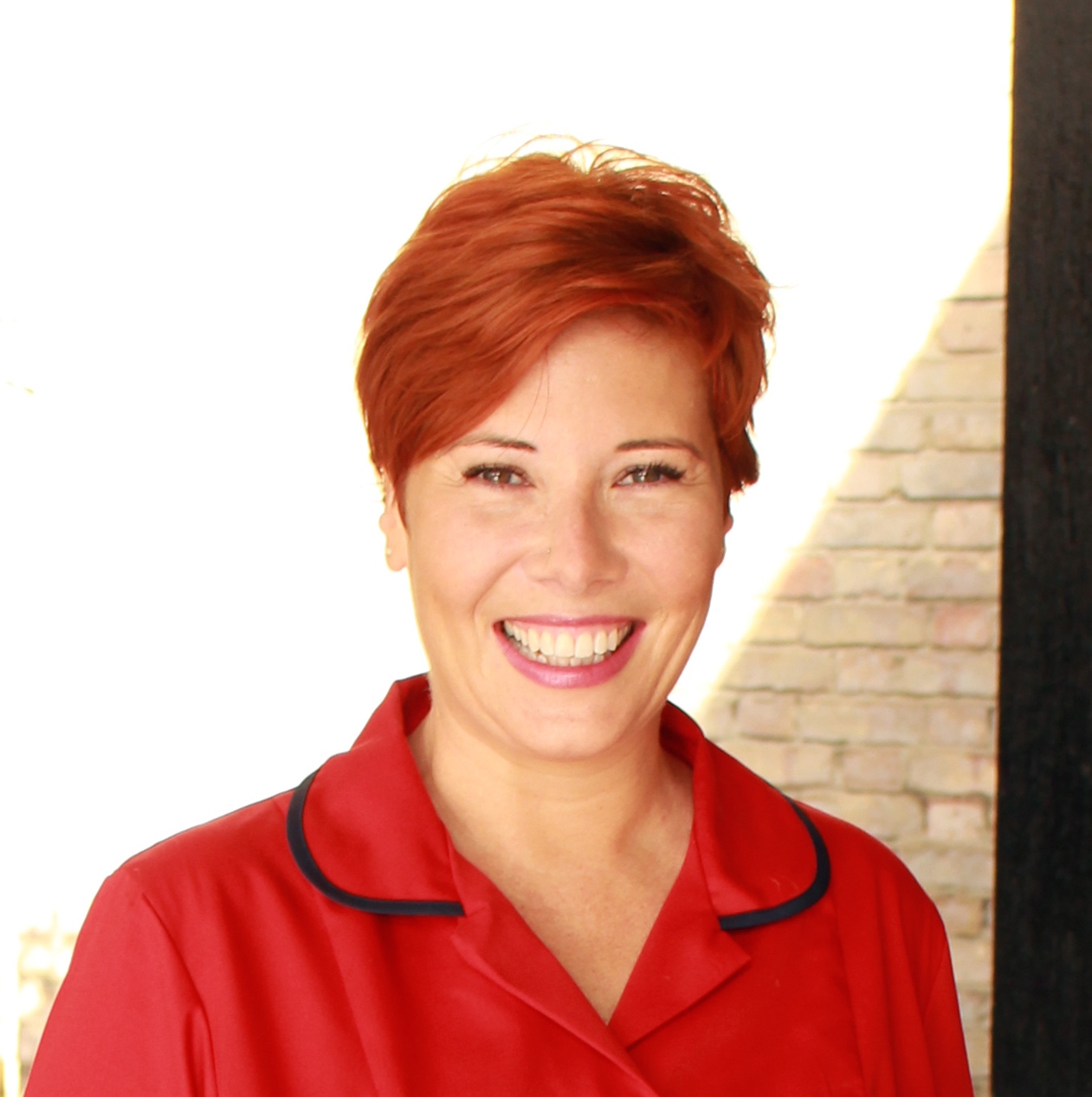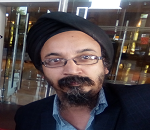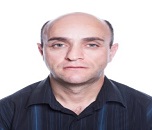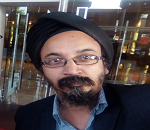Scientific Program
Keynote Session:
Title: Attachment: The template of physical and mental health
Biography:
Myrna Martin is a Family Therapist, Teacher of Pre and Perinatal Psychology, and an approved teacher of Biodynamic Craniosacral Therapy. She teaches across the USA and Canada, United Kingdom, Taiwan, New Zealand and Europe. The fields she focuses on includes pre and perinatal therapy with focus on the early developmental trauma resolution model. She has taught a two and a half year training in Pre and Perinatal Psychology (PPN) 7 times. Her next training will be in Santa Cruz, CA. beginning in Nov. 2018. Myrna has produced an 80 hour video series "Healing Early Developmental Trauma" which include hundreds of pages of notes, articles and references as well as group support calls. In July 2014 Myrna began three levels of two week intensives in PPN that includes theoretical knowledge, as well as in depth personal exploration of participant's own early history, in a residential format at her Retreat Center in Nelson, BC.
Abstract:
The attachment process from birth to eighteen months of age lays down a template in our bodies for our physical and mental health lifelong. This biological communication between a newborn and developing infant and their caregivers create the relationship this baby has to themselves, to others, their ability to cope with stress, their ability to learn. This process deeply influences the development of the autonomic nervous system. This, in turn, impacts the growing organs in a way in which the physical health of the cardiovascular system, the immune system, the glucose regulating system, and other important organs are vigorous or compromised. The Adverse Childhood Experiences research further delineates these influences.
Title: The perceived level of knowledge of cervical cancer among female medical and nursing students in Bahrain
Biography:
Hana Kadhom has 35 Years’ experience in nursing as a practitioner and educator. Her experience spans across the Middle East and UK. She obtained her PhD in 1989 from Hull University (UK) and she has postgraduate diploma from British Universities (in nursing education and health and safety), she has supervised many postgraduate theses and is a former senior lecturer and Director of the Nursing Degree Bridging program at the Royal College of Surgeons Medical University in Ireland-Bahrain & Saudi Aramco.
Abstract:
Cervical cancer is a leading cause of female mortality worldwide. Screening programs are invaluable in achieving: prevention, diagnosis and early intervention. The Papanicolaou (Pap) smear test is one of the most prominent of these programs and has been proven to be highly effective. Female healthcare professionals need to be knowledgeable about the Human papillomavirus (HPV). This need is born out of their own needs, primarily as women and members of the public. Moreover, knowledge should also improve their effectiveness as professionals.This cross-sectional study assessed knowledge, attitudes, and practices related to the cervical cancer among students in Bahrain using a self-administered questionnaire. 192 females medical (n=44) and nursing (n=148) students were surveyed in 2016
Only one third of participants (65/192) correctly identified that a virus, spread sexually, was a major cause of cervical cancer. There was a significant difference in the proportion of medical and nursing students that answered this question correctly; medical 37 (84.1%) and nursing 28 (18.9%). The odds ratio for nursing students answering this question incorrectly was 4.4 (CI 95% 3.1 - 6.4).This study also suggests that future female healthcare workers maybe expected to be well informed on this topic in both their professional and personal capacity, but less than 1 in 5 of nursing students were aware of HPV in relation to cervical cancer. This indicates that there is a need to increase public awareness of HPV and risk factors for its spread in Bahrain.
Title: The impact of a virtual reality training programme on health professional knowledge, understanding and empathy
Biography:
Paul Slater is a lecturer in statistics at Ulster University Northern Ireland. He is a Psychologist and a lecturer in statistics. He has fifteen years’ experience as a researcher in the areas of Psychometric testing of instruments, Anxiety Disorders, Assessment tool development, Organisational Culture research, older people Assessment, Person-centred Practice and Suicide. He is also advisory editor for the International Journal of Older People Nursing and Physiotherapy Practice and Research
Abstract:
Dementia is one of the major causes of disability and dependency among older people worldwide. Virtual Reality programmes offer a new and innovative sensory distortion programme designed to provide participants with a greater understanding of people living with dementia. To date, limited research has been undertaken on the impact of such programmes. A mixed method transformative design was used to achieve the study aims. Qualitative techniques, focus groups and semi-structured interviews, were used to inform the instrument development prior to administration and again to examine how the VDT training impacted on practice. A quantitative repeated measures research design was used to measure changes in the knowledge, understanding and empathy levels a purposive sample (n=133) of health care professionals taking part in a Virtual reality training programme. A psychometrically acceptable tool was used to gauge of the intervention. The intervention allowed participants to experience symptomology of stage 4 (Moderate) dementia. Full ethical consent was sought and gained.The use of qualitative findings ensured the validity of the instrument to the VDT training programme. The findings demonstrated a positive and statistically significant impact on participant’s knowledge, understand in empathy. Participants also reported that they felt they had overestimated their knowledge regarding dementia prior to training and that the training allowed them to ‘walk in the shoes’ of the person with dementia. Statistically significant changes were noted across Nurses, Allied health professionals, health care assistants and medical staff. Almost all (95%) participants recommend the programme as an effective training tool. Participants reported that the VDT training had a significant impact on practice and helped to bring their theoretical understanding of dementia ‘to life’.The virtual reality experience is an effective, well received training programme providing a unique opportunity to experience dementia. All training must be embedded in an overarching programme of facilitation and practice development in order to maximize potential for translating its impact into practice.
Title: Nursing patients with a profound brain injury: managing complex ethical issues with compassion at the end of life
Biography:
Dr Emily McWhirter is the Director of Nursing at the Royal Hospital for Neuro-disability in London, UK. The hospital specialises in caring for patients with profound disability following acquired brain injury, as a result of major trauma or severe medical illness. Emily has been a nurse for over 30 years. She has a PhD in nursing management, with research interests in major trauma, patients experience, and nursing leadership and education.
Abstract:
Caring for patients at the end of their lives is a challenging but essential part of the role of a nurse. Providing an environment where patients can feel pain free, calm and at peace is an important part of this care, and supporting relatives and friends to come to terms with the death of a loved one takes skill, compassion and empathy. Experience and insight help nurses to manage these processes well but critical to providing high quality care at the end of life lies in high quality education and training.The Royal Hospital for Neuro-disability (RHN) provides care for patients who have an acquired brain injury. A number of these patients have a diagnosis of a prolonged disorders of consciousness (PDOC), including vegetative (VS) and minimally conscious states (MCS). They may remain in the hospital for the rest of their lives. For some, this may be for many years, even decades. Caring for patients in VS or MCS is complex. Over time, nursing and healthcare staff come to know these patients and their family and friends very well.The laws around withdrawal of clinically assisted food and hydration in the UK are clear. Decisions around treatment plans and resuscitation status are made in the best interests of each patient and yet the ethical issues that evolve as a result challenge every individual who plays a role in the provision of care. Cultural, religious and personal views are important to all staff and cannot be ignored.Establishing a bespoke training programme for staff from multiple cultures, faiths and perspectives who are involved in end of life care has enabled staff groups to address the issues around ethics, the law, best interests and conflict in a way that has united the workforce to deliver a high-quality service in a complex speciality, at the end of life.
Title: Enhancing the patient experience; how do we create and manage high quality patients’ experience of care in a complex brain injury setting?
Biography:
Suzie Adam is the Head of Nursing at the Royal Hospital for Neuro disability in London, UK. The hospital specialises in caring for patients with profound disability following acquired brain injury, as a result of major trauma or severe medical illness. Suzie has extensive experience in caring for and leading teams working with some of the most challenging in-patients, from forensic mental health units, challenging behaviour, personality disorder and addictions to CAMHS and post-acute brain injury.
Abstract:
Caring for patients who have a range of mental health, physical illness and long term conditions presents us at the Royal Hospital for Neuro Disability (RHN) with a nursing and organizational challenge. Hugely differing needs, from short-stay neuro-rehabilitation to long term care sometimes spanning decades, as well as behavioural challenges and advancing progressive diseases means we need to look critically at how we provide our treatment and care in a way that is truly bespoke.A hospital becoming a home; for many their injury will mean years of being in our hospital, sometimes for the rest of their lives and the impact this has cannot be underestimated. We therefore have evolved as a community as well as hospital and have to continually balance a fine line between normalizing our patients lives, providing leisure and meaningful activity as well ensuring they are safe and still have access to sometimes complex nursing and medical care. Because we are unlike normal hospitals we need to think broadly outside of the box!
Quality of life is the focus and assessable, specially-adapted activities are provided with the support of a large team of volunteers. Using technology and innovation as well as blue-sky thinking have been part of a journey that we are still on.
Supporting our staff with the emotional burden of caring for such a patient group is a huge part of how we can be successful in caring for our patient’s and ensuring they can live their best life. Recognising that their training needs are not just limited to typical nurse competencies and managing physical health has been a new development and one that has seen us create a bespoke training program, accredited by the Royal College of Nursing.
Oral Session 1:
- Evidence-Based Nursing | Evidence Based Non Clinical Practice| Reproductive Health Nursing| Cancer Nursing| Mental Health Nursing| Surgical Nursing| Cardiac Nursing| Orthopaedic Nursing| Male Nursing| Holistic Nursing

Chair
Hana Kadhom
University of Royal College of Surgeon, UK
Title: Workshop on fetal Growth restriction: Suspicion, diagnosis and management by ultrasound and color doppler
Biography:
Dr. Kuldeep Singh is practicing in South Delhi and is known for his skills in Ultrasound in Ob, Gyn and Infertility. He has authored 16 books on Ultrasound in Obs, Gyn and Infertility. His books have been translated into Spanish, Chineseand Portuguese. He was awarded the IMAGING SCIENCE AWARD in the AICOG in Delhi. He is presently the President of the Delhi Chapter of IFUMB. With teaching as his passion he is presently running Ultrasound Teaching Modules in Basic and Advanced Ultrasound in Obstetrics, Gynaecology and Infertility
Abstract:
A small for dates fetus is broadly any fetus with an estimated fetal weight below the tenth percentile. What is most important is to define and classify and segregate whether it is a constitutionally small for gestational age fetus which is normal in terms of perinatal outcome or a fetus with true fetal growth restriction which is going to show signs on ultrasound and color Doppler and also reflect a poor perinatal outcome.
This differentiation is done by meticulous search for signs on 2D ultrasound with charting of growth potential and Doppler ultrasound showing changes in cerebroplacental ratio and uterine arteries and umbilical artery. Once this is done we need to reclassify them as early or late onset fetal growth restriction. Further management strategies and decision of when and where to deliver are determined by changes in Doppler showing progressive fetal deterioration.
Which vessels to be insonated, what to infer, optimal time intervals to repeat the scan and when to deliver so as to minimize fetal injury and demise and to avoid risks of iatrogenic preterm delivery is the aim of this study.
- Turan OM, et al: Progression of Doppler abnormalities in intrauterine growth restriction. Ultrasound Obstet Gynecol 2008;32:160-167.
- Batalle D, Eixarch E, Figueras F, Muñoz-Moreno E, Bargallo N, Illa M, Acosta-Rojas R, Amat-Roldan I, Gratacos E (2012). "Altered small-world topology of structural brain networks in infants with intrauterine growth restriction and its association with later neurodevelopmental outcome". NeuroImage. 60 (2): 1352–66
- Vergani P, et al: Prognostic value of uterine artery Doppler velocimetry in growth-restricted fetuses delivered near term. Am J Obstet Gynecol 2002;187:932-936.
- Ghosh GS, Gudmundsson S: Uterine and umbilical artery Doppler are comparable in predicting perinatal outcome of growth-restricted fetuses. BJOG 2009;116:424-430.
- Oros D, et al: Longitudinal changes in uterine, umbilical and fetal cerebral Doppler indices in late-onset small-for-gestational age fetuses. Ultrasound Obstet Gynecol 2011;37:191-195.
Title: Second victim: prevalence, symptoms and support perception
Biography:
He had completed his nursing BA degree in 1998 in Tel-Aviv University and public health MA degree (MPH) in 2013 in Ben-Gurion University. Now days he is studying PhD at Tel-Aviv University in the department of epidemiology and these days he is moving to stage B. Until two years ago, He worked as nursing director in internal department in Beilinson hospital. And for the past two years He has been working as coordinator of nursing research in Rabin Medical Center (Beilinson and Hasharon hospitals) and in the context of research coordinator he lead researches such Operating Room, Complexity and Variety of Quality Projects
Abstract:
BACKGROUND: Patient safety adverse events (PSEs) cause harm and suffer to patients and their families (first victim). However, the involved health care providers (HCPs) can also become victims (second victim-SV). The prevalence of SV phenomenon varies from 10.4% to 43.3%.
OBJECTIVES: Measurement the prevalence of PSE exposure and risk factors, symptoms and support perception among exposed.
METHODS: A cross-sectional study, conducted at Rabin Medical Center, Israel. The data were collected by using a validated self-reporting questionnaire, based on a convenience sampling of HCPs.
RESULTS: A total of 870 HCPs responded, 630 (70%) of them reported to be involved in PSEs. There was no difference in the prevalence of PSEs by profession / education of the HCPs. The participants without any academic education and those with a BA degree perceive less substantial responses whereas physicians assessed the most severe response to PSEs (3.8, 4.02, 4.08 p <.05, respectively).
Those who reported to be involved in PSEs tended to agree that the involvement in PSEs might cause negative responses, including feelings of guilt, anger, anxiety, shame, tiredness and sleeping difficulties. At the same time, the respondents agreed that these HCPs need an organizational support.
Participants who were involved or knew colleagues who were involved in PSEs (n = 630) assessed the risk of developing negative responses after the event higher than those who were not involved in PSEs or were not familiar with these cases (n = 151) (3.98 vs. 3.56, p <.001). These subjects also had higher need for support (4.91 vs. 4.69, p <.05). In addition, it was agreed that the existing support is insufficient, and that the hospital should invest more in supporting these HCPs.
CONCLUSIONS: SV phenomenon is widespread among all HCPs, which require centrally organized support to promote a positive safety environment.
Title: Anomaly Scan: Paradigm shift from the second to the first trimester
Biography:
Dr. Kuldeep Singh is practicing in South Delhi and is known for his skills in Ultrasound in Ob, Gyn and Infertility. He has authored 16 books on Ultrasound in Obs, Gyn and Infertility. His books have been translated into Spanish, Chineseand Portuguese. He was awarded the IMAGING SCIENCE AWARD in the AICOG in Delhi. He is presently the President of the Delhi Chapter of IFUMB. With teaching as his passion he is presently running Ultrasound Teaching Modules in Basic and Advanced Ultrasound in Obstetrics, Gynaecology and Infertility.
Abstract:
Ultrasound is an essential tool for any obstetric practise. When it started five decades ago little did we realise that this invention is a technological marvel. One could look into the presentation and the viability of the fetus. Acrania could be excluded in the third trimester and with ultrasound machines and probes getting better we could exclude that in the second trimester so called Level II scan. With high resolution probes and high frequency transvaginal probes one can now diagnose fetal abnormalities in the late first trimester. This avoids the mental trauma the mother and the family have to go through and lethal abnormalities can be terminated much earlier. Acrania, anencephaly, gross dysraphic disorganisation of the fetal spine, anterior thoracic and abdominal wall defects and gross limb abnormalities are few structural malformations that can be detected with ease as early as 11-12 weeks. Apart from structural abnormalities the index of suspicion for chromosomal abnormalities also is there with looking at the nuchal translucency, nasal bone and flow through the tricuspid valve and in the ductus venosus. Combined testing with a dual test increases the sensitivity manifold. What is most important is the knowhow of what to look and how to look in your 11-14 weeks scan.
Title: Challenges of nursing
Biography:
Abstract:
Nursing basically is an art of providing to the sick and instead of being worshipped has come under constant scrutiny and is being forced to face many challenges. Challenges like regional differences have penetrated through and has gradually led to the development of income inequalities. Not only this, the nurses on a day to day basis are exposed to various diseases, pathogens as well as flu germs which affects their health adversely. Inspite of their gruelling schedules they are forced to work for longer hours and also for more shifts that to without any incentives. Often this leads to fatigue, lack of sleep and gradual development of a negative atmosphere. Societies have been very harsh on the women from the start but this problem has become more acute in the case of nurses as they have to face the violent behavior not only from their fellow workers but also from the patients. A lot of times due to shortage of staff the nurses are pressurized to work more which leads to burnout and as it is their job is extremely taxing. These challenges leave them dissatisfied with their jobs. This leads to less and less people being attracted and opting for this profession.
Title: Influence of nursing work environment on nurse job satisfaction from 25 hospitals in China
Biography:
Li Juan Fu has her expertise in cardio - thoracic surgery nursing and intensive care. Her team focused on postoperative infection prevention and nursing intervention for children with severe clinical severity, perioperative nursing care, perioperative nutrition, quality of life research and nursing intervention, the establishment of post operation critical assessment system for children with congenital heart disease, the application of critical degree score and other aspects of nursing research work.
Abstract:
Objective: To describe job satisfaction of pediatric intensive care units in China, and analyze the relationship of nursing work environment between job satisfaction.
Methods: From November 2017 to May 2018, a total of 1414 nurses of pediatric intensive care units from 25 hospitals of 16 provinces and cities nationwide in China were selected using convenient sampling, and surveyed by Nurses Job Satisfaction Scale (NJSS) and Practice Environment Scale (PES). Descriptive statistics and Hierarchical multiple regression analysis were performed by SPSS 20.0.
Results: The average score of nurse job satisfaction of pediatric nurses was 3.29 ± 0.49(score range of 1-5), which was in the middle level in China. Hierarchical regression results show that the area where the hospital is located, monthly income can affect the nurse job satisfaction, and nursing work environment play an important role for nurses’ job satisfaction, the model explained 73.1% amount of variance.
Conclusion: The nursing work environment is the important factor influencing the nurses job satisfaction of pediatric intensive care unit, how to balance the domestic resources and reduce the regional differences, we work together to create a healthy environment in pediatric intensive care unit, further improving the nurses job satisfaction will be the important issues in the future.
Title: Educational project. Application of osteopathic medicine in the neonatal and infant period
Biography:
Paula Rodríguez has just started in the world of research after finishing college in 2018. Without having any previous experience in research, she has presented this project that aims to achieve an improvement in maternal and child health care, area in which she wants to focus her studies. She is currently working in the Neonatal Intensive Care Unit of Mother-Child Hospital belonging to the Gregorio Marañón General University Hospital, in which she intends to implement the educational project presented.
Abstract:
Statement of the Problem: Osteopathic medicine is a form of drug-free, non-invasive manual medicine, classified as a complementary and alternative medicine. It involves manual contact of body structures with slight pressures that, in addition, produce a stimulating effect of the organism's own health resources. All this suggests that its indication in the neonatal and infant period should be high, being necessary to know its contribution during this period, especially in the most vulnerable newborns, premature infants. Many studies and cases have shown the existence of clinical and scientific evidence on the benefits of this manual therapy in some of the pathologies present in childhood. Due to the close relationship between nursing professionals and their patients, nurses play a fundamental role in providing health education to patients. For this reason, this educational project focuses on nursing professionals in the NICU of Mother-Child Hospital belonging to the Gregorio Marañón General University Hospital, with the aim of making them aware of the great benefits provided by this therapy during the neonatal and infancy periods; in addition to the pathologies which respond well to osteopathic treatment, and how to recognize and select a legally accredited osteopath. Thus, in many cases, improvements in children’s health would be seen, as well as a reduction in the costs associated with these diseases.
Methodology & Theoretical Orientation: I conducted a systematic review, aiming to answer the following clinical question: Know the scientific evidence of osteopathic manipulation in the neonatal and infant period.Findings: Searching retrieved 136 articles. After the removal of conference abstracts and those which didn´t have free access to the full abstracts, 27 articles were evaluated.
Conclusion & Significance: In this systematic review, I evaluated the efficacy of the Osteopathic Manipulative Treatment based on clinical cases that reported disorders, such as: infant colic, suction problems, plagiocephaly.
Title: Workshop: Title to be Announced
Biography:
Hana Kadhom has 35 Years’ experience in nursing as a practitioner and educator. Her experience spans across the Middle East and UK. She obtained her PhD in 1989 from Hull University (UK) and she has postgraduate diploma from British Universities (in nursing education and health and safety), she has supervised many postgraduate theses and is a former senior lecturer and Director of the Nursing Degree Bridging program at the Royal College of Surgeons Medical University in Ireland-Bahrain & Saudi Aramco.
Abstract:
To be Announced..
Keynote Session:
Title: An exploration of Indian nurses motivation to nurse : a matter of service or economic gain and social mobility
Biography:
Michelle currently works a City University of London as the Programme Director: Mentorship : Supporting & Assessing Learning in Practice Settings and Practice Lead for Adult nursing students. Michelle has previously worked as a Senior Lecturer at Buckinghamshire New University and Kingston University & St Georges University, London. This followed a successful nursing career as a District Nursing Sister and as an Intermediate Care Nurse. Michelle has taught a range of subjects latterly with a focus on Public Health, Culture & Diversity in Healthcare, Professional Nursing and Management of Long term conditions.Michelle has an MSc in Medical Anthropology and has a keen interest in culture, expressions of illness and how nurses cope with this. Michelle is currently in the final phase of her PhD exploring the experiences of Indian nurses coming to the UK to study and work.Michelle has an MSc Medical Anthropology; BSc Community Nursing (District Nurse); PGCE; Nurse Prescriber; Diploma In Nursing (Adult); BA (Hons) Business Studies
Abstract:
The aim of this paper is to explore the context of the decision making process to become a nurse in India for both the male and female nurses, examining the differences between the genders. Nursing itself has changed there are different way of performing nursing which has led in part to the reduction of stigma associated with nursing. Nursing is associated with much more positive prospects in terms of career, travel and earning potential. This has attracted more men to the profession and led to more non-Christian nurses taking up the profession. Nursing at first glance appears ungendered as with other professional roles however both men and women show how gender can be fluid and adaptable within nursing. Two distinct explanations exist for what it means to be a nurse one feminine and the other masculine. For the female nurses the profession is one that encompasses service to others and duty a way to honour ones religion, community and family. Nursing is closely aligned with the aptitudes of a mother that is to care and nurture. The masculine explanation of nursing is concerned with career and social development, one linked to economic gain and status with little mention of care as a motivation to nurse. Through my ethnographic work I revealed clear differences and contrasting views of the male and female nurse’s career aspirations. The discussion with the nurses demonstrates how they fulfil they gender roles but also offer insights in to how nursing can support changes in gender roles, such as the women becoming the main breadwinner and financially secure. The male nurse, by expressing an economic motivation to become a nurse, would be able to fulfil his expected role as a son and husband; the primary contributor to the family’s finances.
Title: Evaluation of the implementation process of e-roistering system with frontline staff in an acute hospital in Ireland
Biography:
Paul Slater is a lecturer in statistics at Ulster University Northern Ireland. He is a Psychologist and a lecturer in statistics. He has fifteen years’ experience as a researcher in the areas of Psychometric testing of instruments, Anxiety Disorders, Assessment tool development, Organisational Culture research, older people Assessment, Person-centred Practice and Suicide. He is also advisory editor for the International Journal of Older People Nursing and Physiotherapy Practice and Research
Abstract:
In recent years, e-rostering systems, have been implemented by an ever-increasing number of health care organisations around the world, however, there is a dearth of empirical and policy research and few independent evaluations of e-Rostering solutions in the literature. The aim of the study was to evaluate the implementation of the e-rostering system in an acute hospital setting among front line staff (nurses, nurse manager and health care assistants).A mixed methods exploratory research design was used to gauge the views and attitudes of a population of front line staff in one acute hospital settings following implementation of an e-rostering system. An extensive literature review and six focus groups with frontline staff (n=34) informed the development of the items; an expert panel (n=8) reviewed the items prior to distribution. A cross sectional survey was used to gauge frontline staff views using an 18-itemed tool. The tool examined five broad constructs; assessment of needs, benefits of the e-rostering system, organisational support, satisfaction with the implementation process, training issues by profession. Full ethical approval was sought and gained.
Results: A response rate of 31.8% (n=203) was achieved. The tool was found to have acceptable psychometric properties. Most respondents felt confident about using the e-Rostering system, reported that the system was easy to use and that they were supported during implementation. Respondents were uncertain about the benefits of using the system for patients and staff in providing effective skill mix, staffing levels and ensuring patient safety. Positive aspects of the system identified were: accessibility, schedule in advance and personnel monitoring. The size of the unit and age of respondent had a significant impact on construct scores.
Conclusions: Frontline staff experienced mixed opinions regarding the implementation of e-rostering. The findings highlight contextual factors that may assist with successful implementation in the future.
Title: Influence of nursing work environment on nurse job satisfaction from 25 hospitals in China
Biography:
Li Juan Fu has her expertise in cardio - thoracic surgery nursing and intensive care. Her team focused on postoperative infection prevention and nursing intervention for children with severe clinical severity, perioperative nursing care, perioperative nutrition, quality of life research and nursing intervention, the establishment of post operation critical assessment system for children with congenital heart disease, the application of critical degree score and other aspects of nursing research work.
Abstract:
Objective: To describe job satisfaction of pediatric intensive care units in China, and analyze the relationship of nursing work environment between job satisfaction.
Methods: From November 2017 to May 2018, a total of 1414 nurses of pediatric intensive care units from 25 hospitals of 16 provinces and cities nationwide in China were selected using convenient sampling, and surveyed by Nurses Job Satisfaction Scale (NJSS) and Practice Environment Scale (PES). Descriptive statistics and Hierarchical multiple regression analysis were performed by SPSS 20.0.
Results: The average score of nurse job satisfaction of pediatric nurses was 3.29 ± 0.49(score range of 1-5), which was in the middle level in China. Hierarchical regression results show that the area where the hospital is located, monthly income can affect the nurse job satisfaction, and nursing work environment play an important role for nurses job satisfaction, the model explained 73.1% amount of variance.
Conclusion: The nursing work environment is the important factor influencing the nurses job satisfaction of pediatric intensive care unit, how to balance the domestic resources and reduce the regional differences, we work together to create a healthy environment in pediatric intensive care unit, further improving the nurses job satisfaction will be the important issues in the future.
Oral Session 1:
- Nursing Education and Research| Nursing Infection Control and Prevention| Pregnancy and Womens Health Nursing| Travel Nurse| Mental Health Nursing

Chair
Myrna Martin
Earth Sky Foundation, Canada
Title: Workshop on Co-creating effective emotional communication in high risk families with Preschoolers: An essential for adult mental health
Biography:
Myrna Martin is a Family Therapist, Teacher of Pre and Perinatal Psychology, and an approved teacher of Biodynamic Craniosacral Therapy. She teaches across the USA and Canada, United Kingdom, Taiwan, New Zealand and Europe. The fields she focuses on includes pre and perinatal therapy with focus on the early developmental trauma resolution model. She has taught a two and a half year training in Pre and Perinatal Psychology (PPN) 7 times. Her next training will be in Santa Cruz, CA. beginning in Nov. 2018. Myrna has produced an 80 hour video series "Healing Early Developmental Trauma" which include hundreds of pages of notes, articles and references as well as group support calls. In July 2014 Myrna began three levels of two week intensives in PPN that includes theoretical knowledge, as well as in depth personal exploration of participant's own early history, in a residential format at her Retreat Center in Nelson, BC.
Abstract:
This presentation outlines a somatic emotional based approach to therapeutic clinical work with high risk families with preschoolers. The neuroscience and attachment based research of the past two decades has shown us that early developmental trauma impacts physical and mental health lifelong. The relationship with self, others, stress coping abilities are all affected, as well as immune system, cardiovascular, respiratory, metabolic health and our capacity to learn. Effective trauma informed treatment is essential and possible for pre schoolers who developed insecure or disorganized attachment. The cost of chronic illness in both developed and developing countries is skyrocketing, making the pressure on prevention, and early healing an economic and social issue as well as an individual family issue.Uitilizing video clips of one family, as an example, repatterning approaches will be demonstrated. This aboriginal mother was adopted, ran away at age 14, lived on the streets during four subsequent pregnancies. Two children born were adopted into other families, and an eight month old and a four year old child are with her. The referral agency was a Transition House. These clips include a prenatal repatterning of fear, protection games, and a spontaneous regression to infancy repatterning process and sand play photos. Community based supports include subsidized housing, home support, transportation, and attendance at free community family based play programs. The four year old girl gains a sense of safety and lovability with her mother, with a corresponding change in behaviors, in both child and mother.Greenspan’s Functional Emotional Assessment Scale (FEAS) were used pre and post treatment, with 25 families. A summary of outcomes will be presented, as well as qualitative outcomes reported by the families. Improved social emotional communication resulted in all but one family. This family did not complete treatment as the mother was alcoholic, abusive, and was admitted to a lengthy rehabilitation residential program. 18 of these children were classified “disorganized attachment” and 7 were ‘insecure’. Referrals came from the Transition House, Child/Youth Mental Health, Infant Development Services, Child Welfare, Early Childhood Educators.
Trauma informed early intervention and treatment, in a safe setting, that focuses on the relationship between parents and child, that is a somatic and emotional based approach, is effective. Healing adverse childhood experiences and supporting the ongoing health and secure attachment in high risk families is possible, worthwhile, and cost effective.
Title: The role of sterile services department in preventing infection
Biography:
Fudim Michael has him expertise in evaluation and passion in improving the healthcare .He works as CSSD manager in private medical center .He has made a lot of changes in processes and flow of medical devices from all wards of medical center.
Abstract:
Every healthcare organization faces many risks for transmission of infection, and may experience difficulties in setting priorities. A risk assessment process can assist in setting priorities and in establishing engagement and support from key stakeholders. The result can be a highly effective infection prevention and control program. In addition, the use of a progress report can be helpful for tracking activities on an ongoing basis, and for organizing and facilitating achievement of critical goals. This lecture will demonstrate the process of conducting a risk assessment, with a focus on strategies for success. A progress report will also be utilized for showing how to document and track accomplishments. Participants will have the opportunity to see practical applications of these concepts. Central sterile supply department (CSSD) is in charge of the supply of sterile medical instruments for all departments, which is a key department of preventing hospital-associated infection. It is important to assess the work quality of CSSD personnel to ensure implementation of accurate and appropriate sterilization technique.
Title: Assess the Effectiveness of Yoga on Depression among Women in Post menopause at selected rural areas of Tamilnadu, South India
Biography:
Sharadha Ramesh working as Director Symbiosis College of Nursing, Symbiosis International University, Pune, is a PhD, Faculty of Nursing with total experience of 32 years. She has completed 35 independent research works. He awards include Sigma Theta Tau – Eta Pi award, USA best research paper award during the International Nurses Conference by Omayal Achi College of Nursing/ Saskatchewan University, Canada. For Academic Excellence and Outstanding contribution to Research received award from the International Centre for Collaborative Research and Alumni Association Omayal Achi College of Nursing Chennai. Received the best research paper award in Worldwide Nursing Conference held at Singapore in July 2017. She has presented a total of 146 Papers as Podium Presentations. She has organized more than 250 community service camps, multispecialty health camps, blood donation camps, services during disasters such as tsunami, flood relief camps and post cyclone camps at Chennai
Abstract:
INTRODUCTION: Depression is one of the oldest and most common psychiatric illnesses. The disease has been described as early as 1500 BC. The word depression is used in a variety of ways. It can refer to a sign, symptom, syndrome, emotional state, reaction, disease or clinical entity. According to WHO (2011) 450 million people in the world currently suffer from some form of mental and brain disorders. 121 million suffer from depression and it is estimated that more than 80,000 die by suicide each year. Projected figures from 1990 to 2020 suggest that proportion of the global burden of all diseases accounted by mental and brain disorder could increase to 15% from the present 8.5%. Established psychiatric diagnosis from developing countries like India and Taiwan is only 1.5%.NEED FOR THE STUDY: Depression carries a considerable degree of morbidity and mortality. It has become a common condition due to stressful life style and life events. Depression is a preventable problem if identified early and treated appropriately. Symptoms are rarely expressed by individuals making it difficult to identify the morbidity in the community. The disease is a chronic disorder and is frequently found among women population. The common age group affected ranges from 30 to 50 years. It is commonly found among people deprived of social, economical and educational development and it is one of the most important predictor of suicidal behavior in many people.General studies on psychiatric disorders in the last 2 to 3 decades identified depression to be more prevalent among female population due to poverty, lack of education, over whelming population, unequal distribution of resources are some of the common risk factors for mental disorders and are more severe among women. Hence mental disorders among women especially in India cannot be separated from social, cultural and economic issues. The women have always been pressured by the family members and also due to self imposed objectives. Women are unable to develop deep relationship and feel hopeless and empty when these objectives are not met. When these happen to a woman who is not well educated receives less support and guidance from the social network, aggravated with life events women end up with depression. The researcher with the vast experience has found many rural women suffer silently in the community. Hence proposed to do A study to assess the effectiveness of Yoga on depression among post menopausal women residing in village of Tamilnadu, South India.OBJECTIVES OF THE STUDY
Title: Community health workers stigmatizing attitudes in regards of persons with a mental disorder: a challenge of maternal mental health in a selected health centre in Rwanda
Biography:
Vedaste Baziga working as Lecturer in University of Rwanda, College of Medicine and Health Sciences, School of Nursing and Midwifery, in the Department of Mental Health Nursing.He is experienced teacher/ Nurse Educator and specialized in Mental Health Nursing. He is actively involved in academic activities and has worked as practitioner and supervisor in the Psychiatric Referral Hospital and District Hospitals. Also, He is involved in research activities having many research projects (3 already published, and another he accepted for publication and 2 remaining in the process of data analysis). In addition, He participates in community outreach activities such as mobile clinic in partnership with different NGOs and public institutions etc. To increase my competences, knowledge and skills, He had furthermore, participated in Continuous Professional Development (CPD) in different areas.
Abstract:
Mental disorders (MD) is significantly contributing to global burden of disease and this is the fourth leading cause of global disability. To overcome this concern, the World Health Organization recommended integration of mental health care into general health care facilities and conjointly with nurses in Health Centres, community Health Workers (CHWs) have an important role in the implementation of WHO recommendation about the integration. The objectives of this study are as follows: To describe stereotypical attitudes amongst CHWs regarding persons with a mental disorder and to explore relationships between specific socio-demographic factors (age, gender, level of education, experience and familiarity) and CHWs’ stigmatizing attitudes towards persons with mental disorders in health center of a selected district hospital in Rwanda.
A quantitative, descriptive cross sectional study was conducted among CHWs operating under health centre of a selected District hospital in Rwanda and a self-report questionnaire that included person four demographic variables and two sections such as level of contact and the Community Attitudes towards Mental Illness - Swedish version. The self-report questionnaire was distributed to available CHWs (n=138) and data analysis were performed using the SPSS version 20. This study revealed that participants held negative stereotypes towards persons with MD. Association test revealed more negatives stereotypes towards MD amongst lower educated CHWs, younger CHWs and less experienced CHWs. Also, correlation test revealed that increases in LOC correlates with decrease in score in some CAMIs, subscales and total score respectively.


